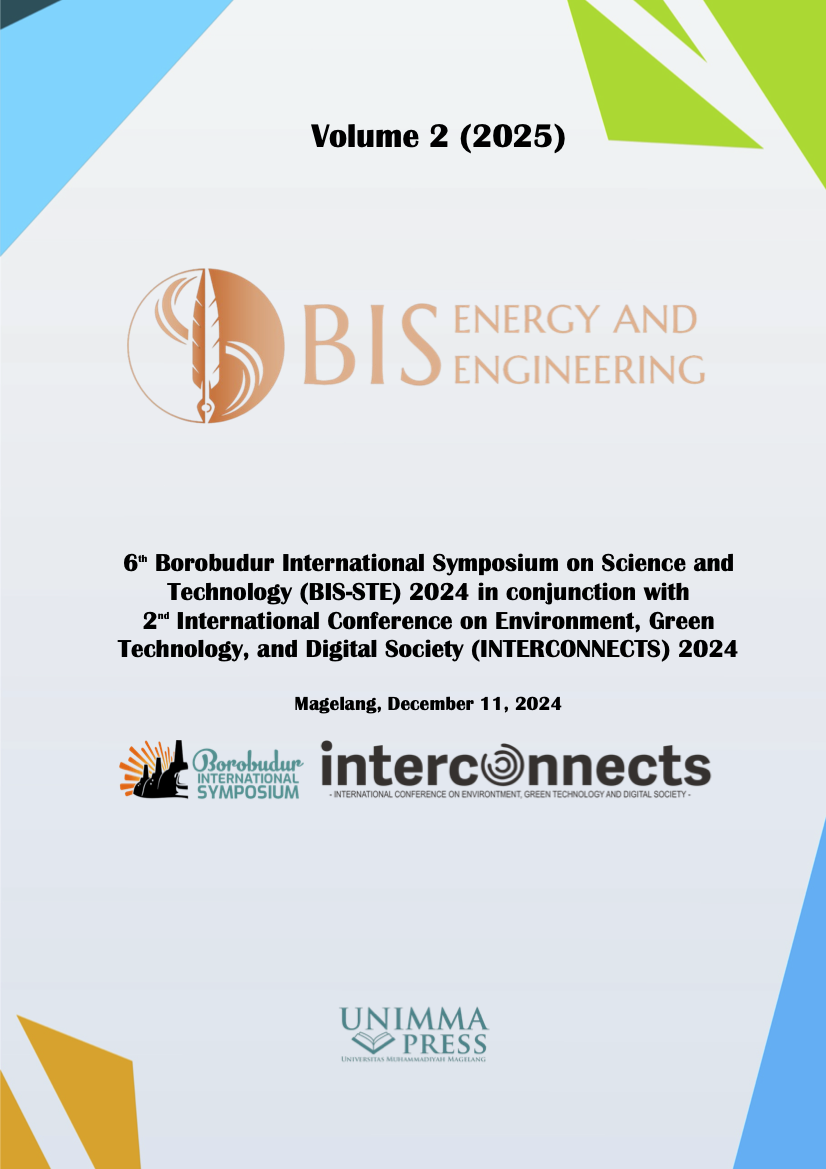Extraction of gadolinium and neodymium from tayan red mud
Keywords:
Red mud,, Leaching, Gadolinium, NeodymiumAbstract
Red mud is a waste generated from the alumina production process. Red mud was previously categorized as hazardous waste due to its high alkalinity. In general, the mineral composition of red mud consists of Fe2O3 (30-60%), Al2O3 (10-20%), SiO2 (3-50%), Na2O (2-10%), CaO (2-8%) and TiO2 in amounts no greater than 25%. This composition varies widely around the world depending on the origin of the bauxite and red mud characterization results also have a rare earth element content of at least 0.03%. Rare earth element is classified as a critical metal, i.e. an essential material used and subject to supply risks as demand increases over time. Indonesia already produces at least 4.4 million tons of red mud per year, so more and more REY will be wasted if we do not utilize the existing red mud. Laboratory-scale experiments were conducted to recover gadolinium and neodymium from Tayan red mud in sulfuric acid in atmospheric pressure acid leching condition. Maximum recovery of gadolinium (91.3%) was recorded with 3 M H2SO4 at 90°C, solid/liquid ratio of 1/15 g/L and agitation rate of 700 rpm in 2 hours. While 81.5% neodymium recovery was achieved at 90°C and solid/liquid ratio of 1/15 g/L in 2 M H2SO4.
References
[1] H. Sutar, C. Mishra, S. K. Sahoo, A. Prasad Chakraverty, and H. S. Maharana, “Progress of Red Mud Utilization: An Overview,” 2014. [Online]. Available: www.sciencedomain.org
[2] “Komposisi Unsur dan Karakterisasi Mineral Magnetik dalam Redmud”.
[3] K. C. Wanta, F. H. Tanujaya, R. F. Susanti, H. T. B. M. Petrus, I. Perdana, and W. Astuti, “Studi Kinetika Proses Atmospheric Pressure Acid Leaching Bijih Laterit Limonit Menggunakan Larutan Asam Nitrat Konsentrasi Rendah,” J. Rekayasa Proses, vol. 12, no. 2, p. 19, Dec. 2018, doi: 10.22146/jrekpros.35644.
[4] H. Supriadi, S. Suyanti, W. Astuti, T. Handini, V. Sutresno, and H. Sujoto, “Optimization and Kinetics of Terbium Leaching from Lapindo Mud using Sulfuric Acid as the Leaching Agent,” vol. 20, no. 1, pp. 35–43, 2025, doi: 10.9767/bcrec.20252.
[5] H. Supriadi et al., “Kinetics Study of Yttrium Leaching from Zircon Tailings Using Sulfuric Acid,” Indones. J. Chem., vol. 23, no. 2, pp. 489–498, 2023, doi: 10.22146/ijc.79966.
[6] R. M. Rivera, B. Ulenaers, G. Ounoughene, K. Binnemans, and T. Van Gerven, “Extraction of rare earths from bauxite residue (red mud) by dry digestion followed by water leaching,” Miner. Eng., vol. 119, pp. 82–92, Apr. 2018, doi: 10.1016/j.mineng.2018.01.023.
[7] Abhilash, S. Sinha, M. K. Sinha, and B. D. Pandey, “Extraction of lanthanum and cerium from Indian red mud,” Int. J. Miner. Process., vol. 127, pp. 70–73, Mar. 2014, doi: 10.1016/j.minpro.2013.12.009.
[8] M. R. Kanekaputra and M. Z. Mubarok, “Extraction of scandium from bauxite residue by high-pressure leaching in sulfuric acid solution,” Heliyon, vol. 9, no. 3, Mar. 2023, doi: 10.1016/j.heliyon.2023.e14652.
[9] W. Wang, Y. Pranolo, and C. Y. Cheng, “Recovery of scandium from synthetic red mud leach solutions by solvent extraction with D2EHPA,” Sep. Purif. Technol., vol. 108, pp. 96–102, 2013, doi: 10.1016/j.seppur.2013.02.001.
[10] W. Li, Z. Li, N. Wang, and H. Gu, “Selective extraction of rare earth elements from red mud using oxalic and sulfuric acids,” J. Environ. Chem. Eng., vol. 10, no. 6, Dec. 2022, doi: 10.1016/j.jece.2022.108650.
[11] S. Reid, J. Tam, M. Yang, and G. Azimi, “Technospheric Mining of Rare Earth Elements from Bauxite Residue (Red Mud): Process Optimization, Kinetic Investigation, and Microwave Pretreatment,” Sci. Rep., vol. 7, no. 1, Dec. 2017, doi: 10.1038/s41598-017-15457-8.
[12] Y. D. Putri, W. Astuti, D. Lesmana, S. Br Ginting, and V. S. H. Sujoto, “Reductive Leaching of Low-Grade Manganese Ores from Way Kanan Using Corncob As Reductant,” J. Rekayasa Proses, vol. 17, no. 1, pp. 60–65, 2023, doi: 10.22146/jrekpros.70372.
[13] W. Aryani, A. G. Anggraini, F. Bahfie, U. Herlina, M. Al Muttaqii, and E. Prasetyo, “A Kinetic Study of Manganese Leaching from Low-Grade Psilomelane Ore by Acetic-Tannic Acid Lixiviant,” ASEAN J. Chem. Eng., vol. 21, no. 2, pp. 188–200, 2021, doi: 10.22146/ajche.64285.
[14] I. D. Febriana, H. S. Kusuma, S. Gala, and M. Mahfud, “The Effect of Temperature on Extraction of Swietenia Mahagoni by Ultrasound-assisted Extraction (UAE) Method,” 2016.
[15] A. Maulidia et al., “Kinetic Study of Lithium Leaching from Sidoarjo Mud Using Sulfuric Acid,” Mining, Metall. Explor., vol. 40, no. 4, pp. 1279–1288, 2023, doi: 10.1007/s42461-023-00812-3.
Downloads
Published
Conference Proceedings Volume
Section
License

This work is licensed under a Creative Commons Attribution-NonCommercial 4.0 International License.

